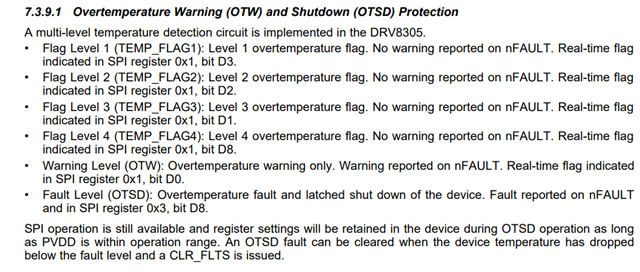Hi,
I am working on a prototype of a driver for BLDC motors that employs a controller for BLDC motors using a DRV8305NPHPR gate driver. I have soldered a couple of complete boards. On one of them, everything works perfectly, while on the other, running exactly the same software, the gate driver is not functioning correctly.
Making readings from the DRV8305NPHPR registers through the SPI interface, I observe that in the case of the non-functioning board, the values are as follows:
---Warning and Watchdog Reset---
Reading Register : 0x01
Byte 0 : 00000100
Byte 1 : 00100000
Register 0x01: 0010000000000100
[ FAULT | TEMP_FLAG2]
---OV/VDS Faults---
Reading Register : 2
Byte 0 : 00000010
Byte 1 : 00000000
Register 0x02: 0000000000000010
[ SNS_C_OCP]
--- IC Faults ---
Reading Register : 3
Byte 0 : 00000000
Byte 1 : 00000000
Register 0x04: 0000000000000000
[None]
--- VGS Faults ---
Reading Register : 4
Byte 0 : 00000000
Byte 1 : 00000000
Register 0x04: 0000000000000000
[None]
The schematic of the connections of the DRV8305NPHPR is shown below.

Some questuions:
- Could someone indicate the origin of what might be happening for the design to work perfectly on one board and not on the other?
- Could someone suggest recommended actions to take to try to solve the problem?
- How is it possible to get a temperature-related error when the device is at room temperature?
Thank you very much in advance for the time spent trying to resolve the issue. If additional information is needed, please feel free to request it.


